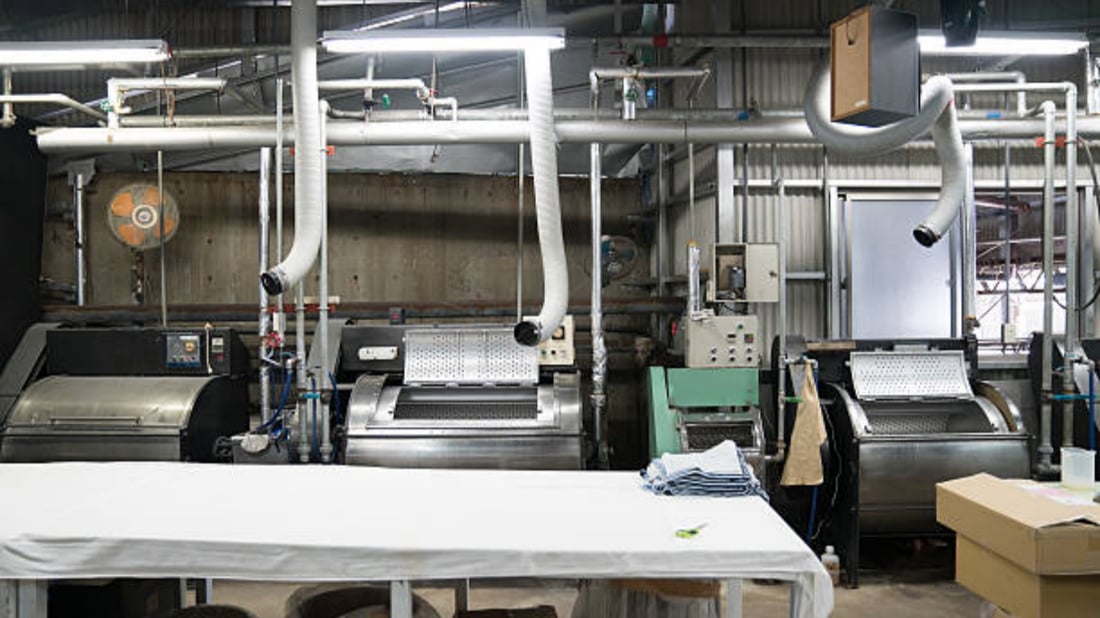Maximizing Efficiency with paper processing equipment
Managing paperwork can be a tedious and time-consuming task for businesses of all sizes. However, with the right paper processing equipment, you can streamline your paperwork process, saving time, reducing errors, and improving overall efficiency. In this article, we will explore various aspects of paper processing equipment and how it can benefit your organization.
1. What is Paper Processing Equipment?
Paper processing equipment refers to a range of machines designed to handle various stages of paper-based processes. This equipment encompasses a wide array of devices, including printers, scanners, shredders, and folding machines, among others. These machines are specifically designed to automate and simplify tasks such as printing, scanning, copying, shredding, and folding, making them essential tools for any business dealing with large volumes of paperwork.
2. The Importance of Paper Processing Equipment
Investing in paper processing equipment offers numerous advantages for businesses. Firstly, it significantly reduces the time and effort required to complete tasks that are traditionally done manually. For example, instead of manually printing and collating multiple copies of documents, a high-speed printer can generate multiple copies simultaneously, saving valuable time and resources.
Secondly, paper processing equipment enhances accuracy and reduces errors. Advanced scanners can automatically detect and correct skewed or misaligned documents, ensuring that every page is scanned accurately. This eliminates the need for manual corrections and minimizes the risk of data entry errors.
Lastly, paper processing equipment promotes cost savings. By automating labor-intensive tasks, businesses can reallocate resources to more essential areas. Moreover, the reduction in errors and improved efficiency leads to cost savings associated with rework and reprints.
3. Types of Paper Processing Equipment
There is a wide range of paper processing equipment available in the market, each serving a specific purpose. Some common types include:
3.1 Printers
Printers are one of the most commonly used paper processing equipment. They range from basic inkjet printers to high-speed commercial printers capable of handling large volumes of printing. Printers can significantly speed up the document production process and offer various features such as double-sided printing and wireless connectivity.
3.2 Scanners
Scanners are essential for converting physical documents into electronic files. They come in different sizes and capabilities, from handheld scanners to high-speed document scanners. Advanced scanners often offer features like automatic document feeders, double-sided scanning, and optical character recognition (OCR) for efficient document management.
3.3 Shredders
Shredders play a crucial role in protecting sensitive information by destroying documents securely. They come in different sizes and security levels, from personal shredders for home use to heavy-duty industrial shredders. Investing in a shredder ensures compliance with privacy regulations and helps prevent identity theft.
3.4 Folding Machines
Folding machines automate the task of folding documents, such as letters, brochures, and invoices. They offer precise and consistent folding, saving time and ensuring a professional appearance. Folding machines are especially beneficial for businesses that frequently send out mass mailings.
4. Factors to Consider when Choosing Paper Processing Equipment
Before purchasing paper processing equipment, it is essential to consider certain factors to ensure you select the right equipment for your specific needs:
4.1 Volume and Capacity
Determine the volume of paperwork your business handles on a regular basis. This will help you choose equipment with the appropriate capacity to handle your workload without causing delays or inefficiencies.
4.2 Speed and Efficiency
Consider the speed at which the equipment operates. High-speed machines are ideal for businesses with large volumes of paperwork, whereas slower machines may suffice for smaller operations. Additionally, look for features that enhance efficiency, such as automatic document feeders and duplex printing.
4.3 Functionality and Features
Assess the specific functionality and features you require. For example, if you frequently scan documents with handwritten annotations, a scanner with OCR capabilities would be beneficial. Similarly, businesses that require secure document disposal should invest in a shredder with high-security level options.
4.4 Ease of Use and Maintenance
Consider the user-friendliness of the equipment and the ease of maintenance. Look for intuitive interfaces, clear instructions, and easy access to customer support. Additionally, consider the maintenance requirements, such as ink or toner replacement, and ensure they align with your business's capabilities.
5. Integrating Paper Processing Equipment with Digital Solutions
While paper processing equipment is essential for managing physical documents, integrating it with digital solutions can further enhance efficiency and productivity. Document management systems and workflow automation software allow businesses to digitize, organize, and track documents, reducing the reliance on physical paperwork and streamlining processes.
By integrating paper processing equipment with digital solutions, businesses can enjoy benefits such as centralized document storage, quick and easy retrieval of information, and automated workflows that eliminate manual tasks.
6. Maintaining and Servicing Paper Processing Equipment
Regular maintenance and servicing are crucial to ensure the longevity and optimal performance of paper processing equipment. Follow the manufacturer's guidelines for cleaning, lubricating, and replacing consumables like ink or toner cartridges. Additionally, schedule routine inspections and servicing by qualified technicians to catch any potential issues before they become major problems.
7. Future Trends in Paper Processing Equipment
The field of paper processing equipment continues to evolve, adapting to the changing needs of businesses. Some future trends to watch out for include:
7.1 Cloud Integration
Cloud integration allows for seamless access and storage of digital documents, eliminating the need for physical paperwork. Paper processing equipment may offer enhanced cloud connectivity, allowing businesses to store and retrieve documents securely from anywhere.
7.2 Artificial Intelligence (AI)
AI-powered paper processing equipment can automate tasks, such as document sorting and data extraction, further streamlining processes and reducing human error. Advanced AI algorithms can intelligently categorize and process documents, improving overall efficiency.
7.3 Mobile Compatibility
With the increasing reliance on mobile devices, paper processing equipment may offer enhanced mobile compatibility, allowing users to print, scan, or access documents directly from their smartphones or tablets.
8. Conclusion
Paper processing equipment plays a vital role in streamlining paperwork processes, improving efficiency, and reducing errors. By investing in the right equipment and integrating it with digital solutions, businesses can save time, cut costs, and enhance overall productivity. Stay updated on the latest trends in paper processing equipment to ensure your organization stays ahead in this rapidly evolving field.

